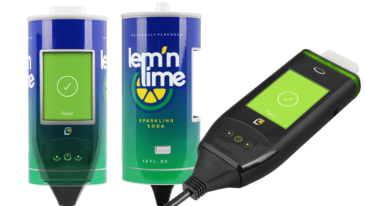
With the growing drunk driving problems in the United States, both state and federal governments have implemented a wide range of measures to reduce incidents of alcohol-impaired driving and hopefully prevent the injuries, deaths, and property damage that they cause. All states enforce 0.08 percent blood alcohol content (BAC) limits, along with zero tolerance laws for drivers under the age of 21. Sobriety checkpoints have become much more common, particularly during weekends and holidays. Governments have also been more proactive in using community-based approaches and promoting health through local efforts.
One of the most effective tools in the fight against drunk driving is the ignition interlock device, or more commonly known as a car breathalyzer. Initially reserved for more severe DUI cases, today ignition interlock devices are more common and used for even first-time DUI offenses, and the effects are significant. Numerous studies showed that IIDs reduced drunk driving recidivism (repeat offenses). Participants who used ignition interlock devices were 15 to 69 percent less likely to be rearrested for a DUI.
Getting an ignition interlock device installed can be confusing for a lot of reasons, so here are some of the most common ignition interlock device laws that you should know.
Interlock Device Laws Differ from State to State
Currently, all 50 states have some kind of law enforcing the use of ignition interlock devices. However, not all of the states require ignition interlock devices for first-time offenses. Twenty-nine states and the District of Columbia do require ignition interlock devices usage in all offenses, including first DUI offenses. California currently has a pilot program in four of its largest counties to determine the effectiveness of IIDs for first offenses. Other states, like Connecticut and Maine, don’t require ignition interlock devices for first offenses, but they do offer incentives for ignition interlock device installation on your first conviction.
The National Highway Traffic Safety Administration also released guidelines in 2013 that encouraged adopting ignition interlock devices for first-time DUI offenders. Furthermore, most states, even those that do not require ignition interlock device laws for first-time offenses, allow judges to order the installation of ignition interlock device laws at their own discretion.
However, most states do require the installation of an ignition interlock device after your second offense and for severe DUI offenses, including having a minor in your vehicle at the time of arrest and having a blood alcohol content of 0.15 percent or higher.
Installation and Maintenance
All jurisdictions require that your ignition interlock device is installed by a court-approved vendor. Your court will usually provide a list of approved installers after sentencing. You must also provide proof of installation to the court. Your IID must also be serviced and calibrated regularly, usually once a month, which ensures that your device is properly working. This shows that you are not tampering with the device and reduces the chances of false readings.
You are also responsible for all costs and fees associated with operating and owning an ignition interlock device. This includes fees for leasing, installation, maintenance, and removal. Some states do allow some financial assistance or reduced fines if you are unable to afford the costs of an ignition interlock device. Talk to your court for potential financial aid.
Monitoring and Logs
Ignition interlock devices record just about every interaction you have with them, including:
- Successful and failed tests and your BAC levels for each test
- Any missed calibrations or maintenance
- Signs of suspected or confirmed tampering
Some ignition interlock devices may also contain cameras that can take photos or videos to confirm who is using the device. Some also feature GPS to record the exact location and time of every test.
These logs are sent to your monitoring authority either immediately via wireless technology or periodically, usually during monthly maintenance.
Tampering Laws are Strict
While specific laws still vary from state to state, all jurisdictions place heavy penalties on people who tamper with their ignition interlock devices. Tampering could involve physically trying to disable the device, using someone else’s breath sample, or otherwise trying to trick your device.
Tampering with an ignition interlock device is considered a felony in some states. Regardless, you can expect various penalties, including jail time, fines, license suspensions or revocations, and extended IID periods.
While ignition interlock devices may seem limiting, think of them as actually enabling. If you’re sober, they enable you to drive and won’t pose any problems.
Sources:


